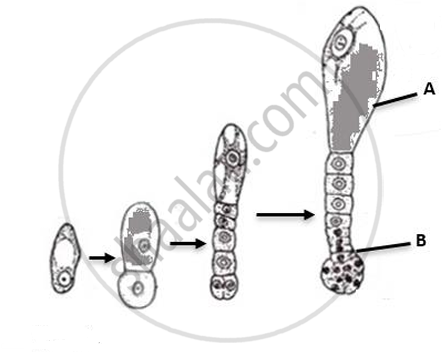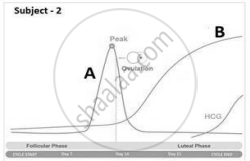Advertisements
Advertisements
प्रश्न
During embryogenesis in dicots, the zygote divides into a basal cell and a terminal cell. The basal cell divides repeatedly to produce a structure called suspensor. Carefully observe the image given below and describe the function of cell – A and cell – B of the suspensor.

Zygote
उत्तर
Cell – A: The haustorial cell absorbs and transfer nutrients from the endosperm to the proembryo.
Cell – B: Hypophysis forms radicle.
APPEARS IN
संबंधित प्रश्न
During the reproductive cycle of a human female, when, where and how does a placenta develop? What is the function of placenta during pregnancy and embryo development?
Choose the correct options of the following question:
Eyelids in human foetus separate in :
To answer the question, study the graphs below for Subjects 1 and 2 showing different levels of certain hormones.


Subject 2 has a higher level of hormone B, which is ______
Which of the following is not a function of the placenta?
Read the following and answer from given below:
Cleavage is the series of rapid mitotic divisions in the zygote and forms blastula. The 2, 4, 8, 16 daughter cells are called blastomeres. An embryo with 64 blastomeres is known as a blastocyst and has a blastocoel cavity. Blastocyst gets implanted in the uterine wall and leads to pregnancy.
At which stage of embryonic development does trophectoderm develop?
The secondary sexual characters develop in females because:
Extra-embryonic membranes provide:
Explain the formation of placenta after the implantation in a human female.
Name the type of antibody that can be transferred through the placenta.
The diagram given below represents a specific stage of human embryonic development. Identify the stage.

